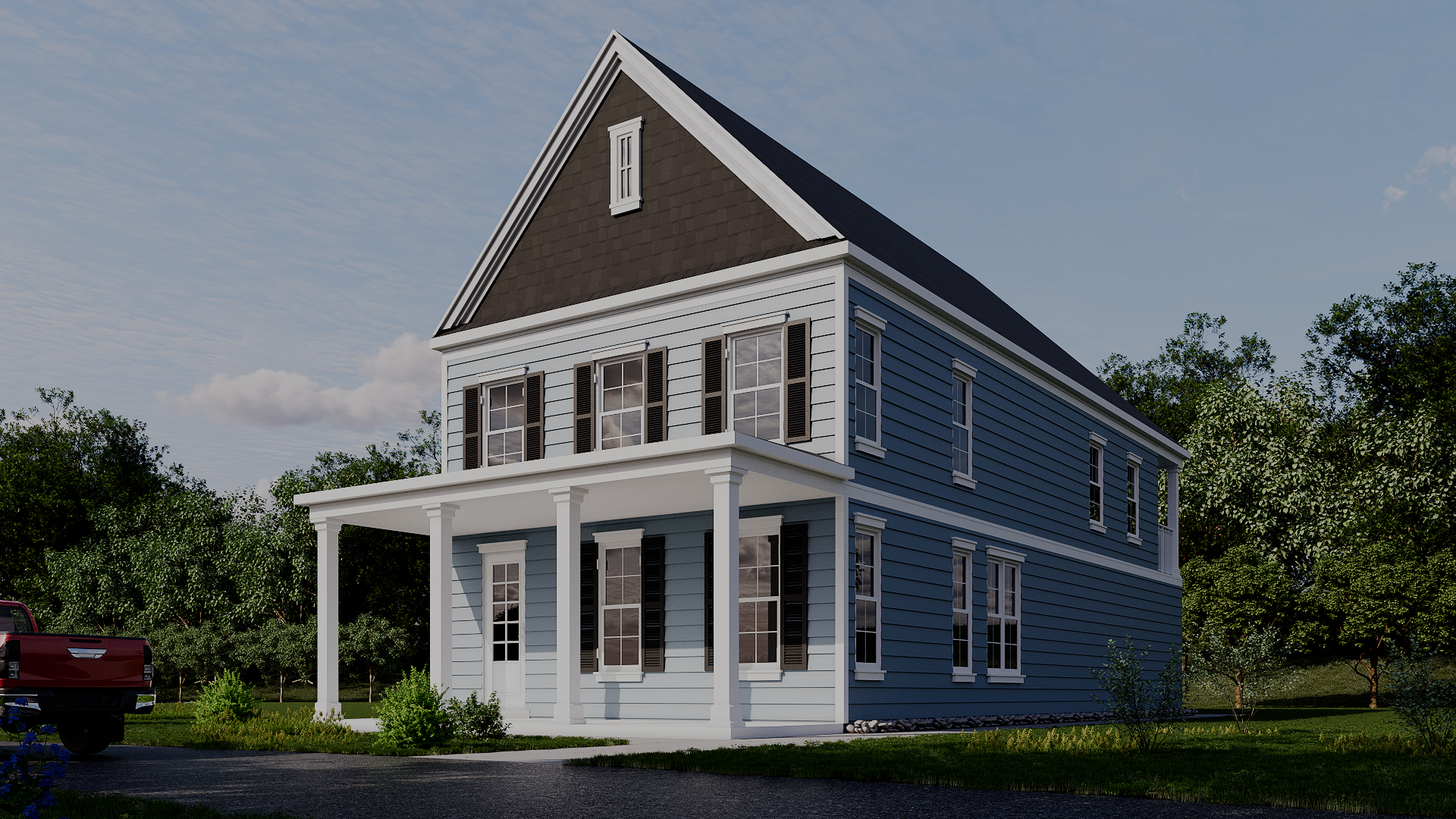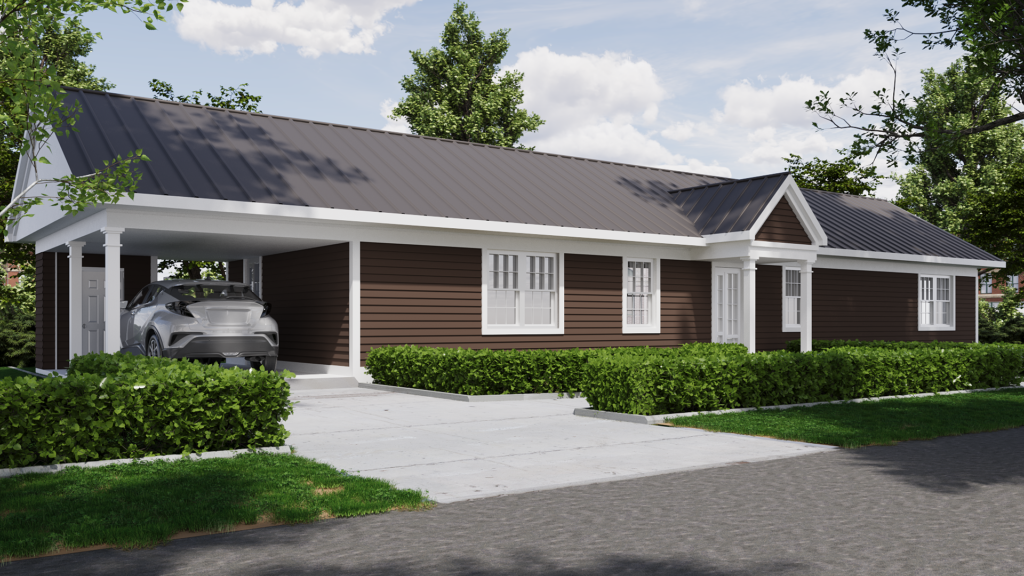
Real Estate Photography vs. 3D Renderings: What’s Better for Property Listings?
In today’s competitive real estate market, visual representation is one of the most critical factors in selling a property. Buyers are increasingly turning to online platforms to browse homes, and the images they see can make or break their decision to inquire further. Traditionally, real estate photography has been the go-to method for showcasing properties. However, with the rise of advanced technologies, 3D renderings have emerged as a powerful alternative.
Both real estate photography and 3D renderings have their strengths, but which is better for property listings? Let’s take an in-depth look at each option, weighing the pros and cons to help you decide which method is most effective for your specific needs.
Real Estate Photography: The Traditional Choice
Real estate photography involves capturing images of a property using a camera, often with professional lighting and post-editing. It has been a staple in the industry for decades and continues to be widely used in property listings.
Advantages of Real Estate Photography
- Authenticity and Accuracy Real estate photography offers a highly accurate representation of the current state of a property. Buyers can trust that what they see in the photos is exactly what the property looks like in real life. This level of authenticity builds trust between buyers and sellers.
- Emotional Connection Photography has a unique ability to evoke emotions. Well-lit and perfectly angled shots can make a space feel inviting, cozy, and aspirational. Buyers often connect emotionally with photos of a home, imagining themselves living there.
- Quick Turnaround With the right equipment and expertise, a photographer can capture and deliver high-quality images of a property in a relatively short amount of time. For sellers who need to list a property quickly, this speed is a significant advantage.
- Capturing Natural Light and Unique Features Photography is ideal for capturing a property’s natural light and emphasizing unique architectural features. A skilled photographer can highlight a home’s best angles, showing it in the best possible light.
Disadvantages of Real Estate Photography
- Limited Control Over Conditions Photographers are at the mercy of real-world conditions, including weather, lighting, and the state of the property. If a home is cluttered, poorly maintained, or has poor lighting, even the best photographer may struggle to produce high-quality images.
- Inflexibility in Changes Once the photos are taken, any changes to the property’s appearance require a reshoot. This can be costly and time-consuming, particularly if renovations or staging are planned after the initial photography session.
- Difficulties in Capturing Unfinished Properties If a property is still under construction or undergoing renovation, real estate photography may not be possible. Buyers often find it challenging to visualize how an unfinished space will look when complete, making it harder to attract interest.
3D Renderings: The Modern Alternative
3D renderings are digitally created images that simulate a property’s design, layout, and features. They are generated using specialized software that allows designers to create realistic representations of properties, including lighting, textures, and furniture.
Advantages of 3D Renderings
- Flexibility and Customization One of the most significant advantages of 3D renderings is the ability to customize and modify the visuals as needed. You can easily make changes to the design, furniture, colors, or even structural elements without requiring a new shoot. This flexibility is invaluable for showing different design possibilities to potential buyers.
- Perfect Representation of Unbuilt or Unfinished Spaces 3D renderings are ideal for marketing properties that are still under construction, in the planning stage, or undergoing significant renovation. Buyers can see exactly what the completed space will look like, helping them visualize their future home even if it doesn’t physically exist yet.
- Enhanced Visual Appeal 3D rendering software allows for control over every aspect of the image, from lighting to weather conditions. This ensures that every image is flawless, capturing the property in the best possible way. Developers can even show multiple views of the same space, such as daytime versus nighttime scenes.
- Cost-Effective in the Long Run While the initial cost of producing 3D renderings can be higher than a traditional photography session, the long-term cost can be more economical, especially if multiple changes or variations are required. You can create different versions of the same space with minimal additional cost.
- Versatile Applications 3D renderings can be used across a wide range of platforms, including virtual tours, social media, and augmented reality. This versatility opens up new ways to market a property, engaging potential buyers with immersive experiences that go beyond traditional photography.
Disadvantages of 3D Renderings
- Potential Lack of Realism While 3D renderings are highly realistic, some buyers may still prefer the authenticity of real-world photography. A rendering can look too perfect, which could raise doubts in buyers’ minds about whether the property will look the same in reality.
- Higher Initial Cost Creating high-quality 3D renderings requires skilled professionals and specialized software, which can make the initial investment more expensive than hiring a photographer. However, as mentioned earlier, this cost may balance out in the long run if multiple iterations are needed.
- Less Emotional Impact While 3D renderings can be stunning, they may lack the emotional resonance of a photograph that captures a real moment in a real space. Some buyers may feel less of a personal connection to a rendered image compared to a photograph of an actual property.

Which Is Better for Property Listings?
The choice between real estate photography and 3D renderings depends largely on the specific circumstances of the property and the goals of the listing. Here’s a breakdown of when each option might be the best fit:
When to Choose Real Estate Photography
- The property is fully constructed and staged, and you want to showcase it as it is.
- You need to capture the natural lighting and unique architectural features of the property.
- Time is of the essence, and you need a quick turnaround for listing visuals.
- You’re marketing a property where emotional connection through real-world imagery is key to driving buyer interest.
When to Choose 3D Renderings
- The property is still under construction or undergoing renovation, and there’s nothing to photograph yet.
- You want to offer multiple design options or showcase various layouts and finishes.
- You need flawless visuals that can be modified easily without reshoots.
- You are marketing high-end properties where luxury and design flexibility are crucial selling points.
- The project is complex, and you need to help buyers visualize the completed product more effectively.
Conclusion
Both real estate photography and 3D renderings offer unique advantages that can enhance property listings in different ways. As technology continues to advance, it’s likely that the future of real estate marketing will involve a blend of both techniques. Photographs will continue to play an essential role in capturing the emotional essence of a property, while 3D renderings will provide flexibility, customization, and visualization for projects that are still in development.
Ultimately, the best choice for your property listings will depend on the specific needs of your project, your target audience, and the overall marketing strategy. In many cases, a combination of high-quality photography and 3D renderings can offer the best of both worlds, providing buyers with an accurate, immersive, and engaging experience that leads to faster sales and higher property value.
By leveraging the strengths of each approach, real estate professionals can create powerful, visually compelling listings that stand out in today’s competitive market.


